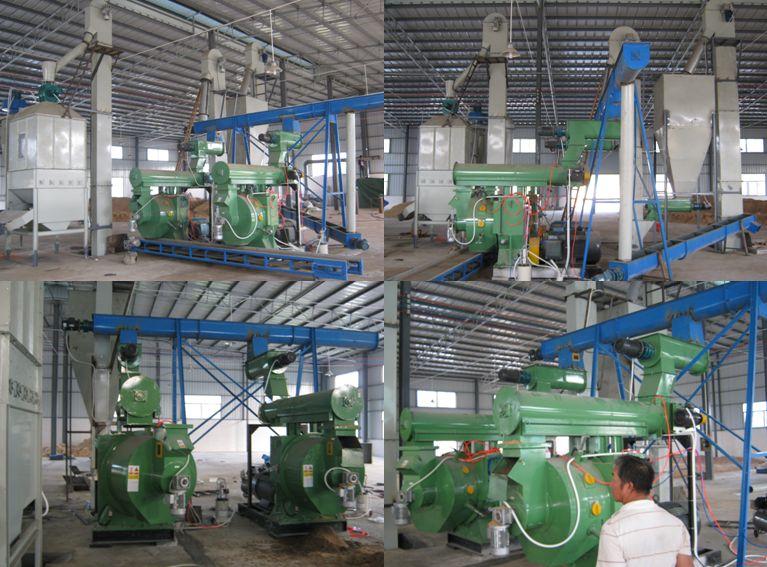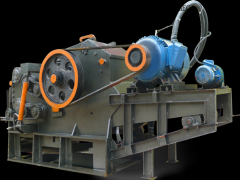Enlarging the feedstock base for wood pellet production lines
Enlarging the feedstock base for wood pellets: from sawdust to alternative wood based feedstock
Energy pellets based on woody biomass are still the preferred commoditized feedstock for the bio-energy sector based on solid biomass. Their compact form and geometry allow for good bulk properties and a comparably high energy density, as well as stability and suitability for existing handling and storage infrastructures. Especially when based on woody biomass, energy pellets come with a high feedstock quality due to their low ash content, high ash melting temperature and unproblematic ash composition. The combustion of wood pellets does not cause any significant fouling, corrosion, slacking or even nutrient withdrawal from the biomass growing area.

Read:How to start a pellet plant
In the early days of energy pellet production the feedstock supply was based on saw mill residues such as saw dust or wood shavings. Their conversion into energy pellets generated an additional income stream and value added to an often no cost or low cost and low price side product. On the other hand sawdust and more so dry wood shavings are an ideal feedstock for the production of wood pellets. They come with already low particle sizes and in the case of shavings they are already dry. Based on the continuously increasing demand for energy pellets and due to a growing bio-energy sector in mainly Europe and North America, a totally new industry of energy pellet manufacturing is being created-mainly driven by the demand side and less by the supply side. In several parts of the world demand for wood pellets already outstripped the supply of those saw mill residues such as sawdust and shavings.
READ: ADVANTAGES OF KMEC RING DIE PELLET MILL
Pellet plant owners have started to source additional and/or alternative sorts of woody feedstock. These include wood chips from saw mills, forest industrial round wood, forest residues, bark, used wood and wood produced from short rotation forestry plantations for the production of either residential grade or industrial grade pellets. But there is also another increasingly important reason for pellet mill operators to diversify their feedstock base. Large scale pellet consumers such as European or North American power plants are increasingly looking for medium and long term supply agreements with well defined volumes and prices that mirror their domestic feed in tariffs. This growing need for stability on the feedstock side in both price and volume conflicts with the volatile supply situation of the residue stream of the saw milling industry.
READ: PELLET FUEL DEVELOPMENT IN THE UK
E.g. during the economic downturn in 2008/2009, Canadian pellet mills that had not yet diversified its feedstock base and were not yet able to process whole industrial round wood at their site including debarking and chipping, consequently ran out of feedstock from their saw mill suppliers and had to default partly on their long term supply contracts. Some biomass pellet manufacturers not only diversify their feedstock portfolio, but also they even integrate further into the supply chain and are trying to secure their feedstock base-mostly back to back with existing pellet supply contracts – by securing their feedstock also on a long term basis through either long term forest concessions or long term supply agreements by forest owners. A case in point is the Plantation Energy Australia Pty Ltd with a feedstock concept mainly based on“non-commercial timber and harvest residues from sustainably managed timber plantations”. Also the feedstock concept of the US American pellet mill developed by the German utility RWE at Waycross, Georgia, with a capacity of 750,000 tons of pellets per year, is primarily based on unused pulp wood that has been contracted for a longer period of time with regional forest owners.
READ: HOW TO INVEST IN A PELLET PRODUCTION PLANT LINE
But also major European pellet manufacturers, such as German Pellets, are already sourcing significant volumes of industrial round wood as a feedstock for both pellet and heat production. Looking at the different “new” woody biomass feedstock source in particular it can be stated that for the production of high quality residential grade pellets, mostly white saw mill wood chips, larger diameter round wood that still can be debarked and totally untreated and uncontaminated used wood-such as from pallet wood-can be used as the main feedstock source. All other woody biomass sources carry to much inert and contaminants and will therefore be used for the production of industrial grade energy pellets. The future use of chemical and thermal preconditioning technologies (torrefaction, leaching, etc.), in addition to densification, will allow for a broader feedstock portfolio for the production of “on spec” energy pellets.
News
- Small Pellet Machine Manufacturer-Kingman
- Application of Wood Pellets and Use of Biomass Pellets
- From Fossil Fuel into Biomass Pellet Fuel
- Biomass Pellet Making Machines Market
- Applying of pellet stoves for home use
- Highland pellets to build $130 million facility in arkansas
- How to deal with the blocked hammer mill
- How to Make Wood Pellets with Sawdust
- The government policy promotes the development of biomass fuel
- Market analysis of biomass pellet fuel
- Strategic positioning of renewable energy
- Biomass energy has pass through the pre assessment
- The key point of deep processing of biomass pellet
- Harbin is promoting the development of biomass machinery
- The development of biomass formation technology I
- The development of biomass formation technology II
- Biomass energy industry is now going full tilt in 2015
- Rapid increasing demand of sawdust pellet on the market
- Pellet fuel market in EU
- Chinese Biomass Energy Conference held in Beijing
- Future market development of straw pellet mill
- Peanut Shell Pellet Mill Makes High Quality Pellets
- The utilization of straw is only 5%, biomass energy needs our attention!
- Corn straw pellet machine relieves the tight supply of fuel energy
- Reasons for loose or not forming of biomass pellet mill





